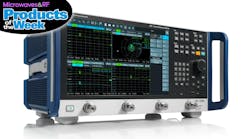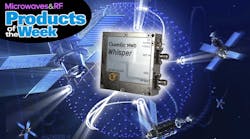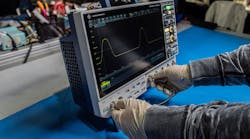Cables and Connectors Head for Higher Frequencies (.PDF Download)
They are often the forgotten part of a system, the means of moving a signal from one point to another. With the fascination toward wireless applications taking center stage over the past three decades, RF/microwave engineers will tend to forget about the still-important needs for wires (cables) and connectors. They come in handy when interconnecting coaxial modules within a system or making a hookup between a device under test (DUT) and a test instrument, such as a spectrum analyzer or vector network analyzer (VNA).
Coaxial cables and connectors have come a long way from the basic assemblies that spanned dc to 18 GHz for military electronic-warfare (EW) systems and test applications. With the growing interest in millimeter-wave frequencies, a greater number of connector and cable suppliers are offering these parts and assemblies through 40 GHz. In fact, a surprising number offer cable assemblies that exceed 100 GHz. That’s in response to the availability of millimeter-wave test instruments and the need for testing higher-frequency DUTs for the anticipated greater use of millimeter-wave frequencies in emerging 5G wireless networks.
Frequency and Bandwidth
The dimensions of connectors and cables necessarily shrink with increasing frequencies to accommodate the smaller wavelengths at those higher frequencies. Government organizations such as the Small Business Innovative Research (SBIR) program are well aware of how bandwidth is being rapidly consumed at microwave frequencies, in both commercial and military systems, and all available bandwidth lies at higher frequencies. The SBIR is currently looking for microfabricated broadband connector designs through 400 GHz for millimeter-wave and submillimeter-wave applications (working in particular with Nuvotronics) in support of test and research work.
In the real world, however, available connectors and cables are typically much lower in frequency, although typical cutoff frequencies for the cables now reach into the millimeter-wave region. Many of the cable assemblies to 100 GHz and higher are marketed as VNA cables because they are mostly used for high-frequency coaxial measurements with a VNA.








